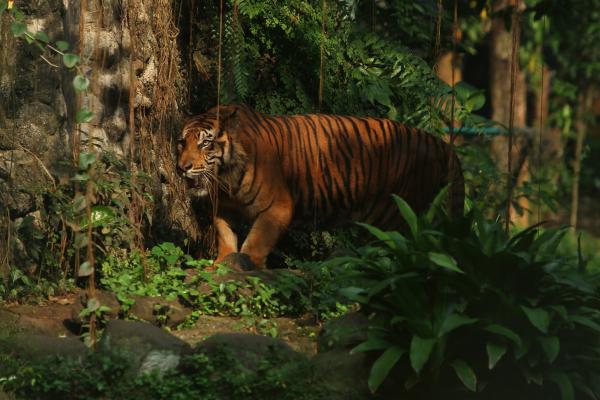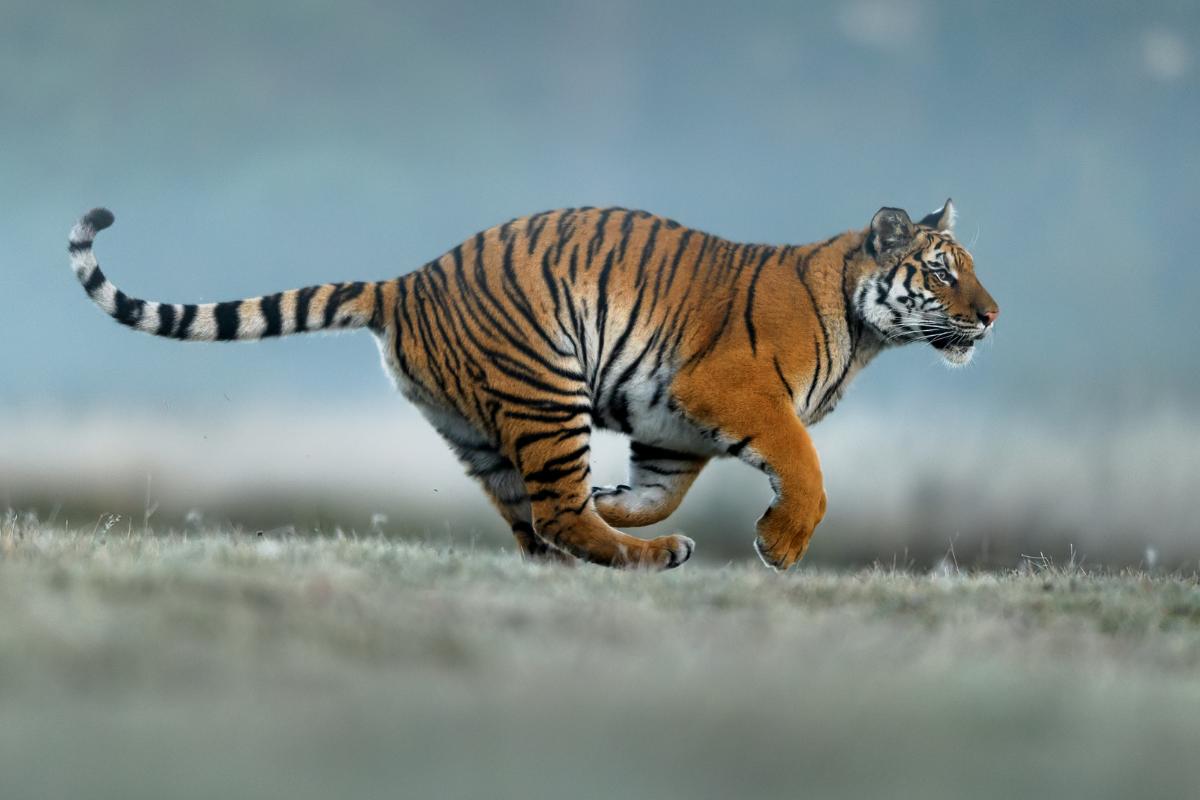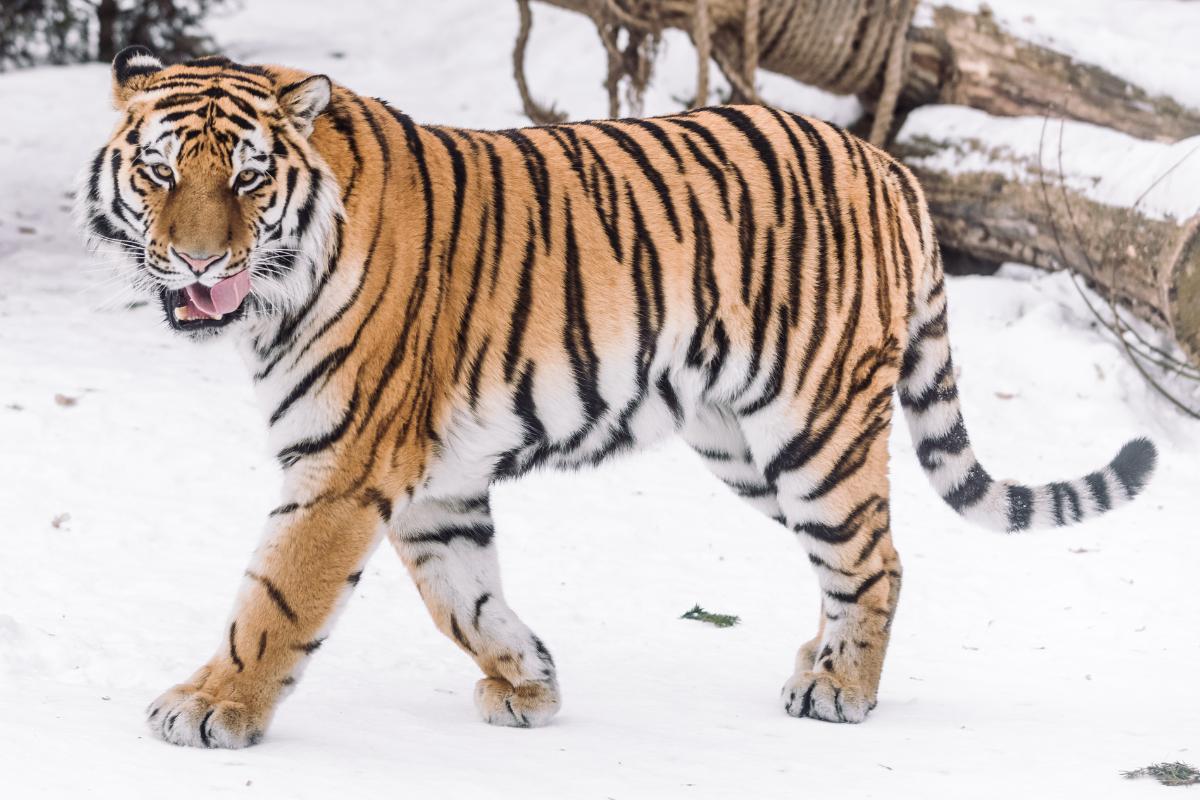How Do Tigers Hunt?


Tigers (Panthera tigris) are among nature's most studied predators, yet their hunting behavior continues to reveal new insights. These solitary hunters succeed through a combination of stealth, strength, and strategy rather than speed or group tactics. From the mangrove swamps of the Sundarbans to the taiga forests of Siberia, tigers have adapted their hunting techniques to various habitats and prey species.
This AnimalWised article delves into how tigers hunt, exploring the complex strategies they employ to track, stalk, and capture their prey.
What makes a tiger a predator?
Tigers (Panthera tigris) are apex predators native to Asia, primarily inhabiting tropical forests, though they once roamed colder, drier regions.
They share the title of largest cat with lions. Adult males weigh over 250 kg (550 lbs) and measure over 3 meters (10 ft) long. Females, smaller but equally skilled hunters, typically weigh under 200 kg (440 lbs) and reach about 2.5 meters (8 ft).
Tigers are adept at blending into their surroundings. Their orange coat features brown to black stripes, with white underbellies and flanks. This distinctive striping, which varies among individuals (with males having more stripes), breaks up their outline, rendering them nearly invisible in shadows and tall grasses.
Beyond camouflage, tigers have effective hunting tools. Their jaws hold 30 teeth, some reaching 9 centimeters (3.5 inches) long, and their retractable claws, up to 10 centimeters (4 inches) long, are kept sharp. Excellent vision, especially in low light, and acute hearing help them detect and track prey.
Unlike lions, tigers are solitary hunters and territorial. Males avoid overlapping territories, while females often stay near their mothers. Each tiger must be a proficient solo hunter to survive.
This solitary nature has honed their hunting skills. Tigers are strong swimmers, crossing up to 6 kilometers (4 miles) of water, often ambushing prey. Their powerful hind legs enable leaps of up to 6 meters (20 ft). Their bite force, 1,050 psi, is the strongest of any big cat.
Instead of speed like cheetahs, tigers are stealth hunters. Their padded paws allow silent movement, approaching within 20 meters (65 ft) of prey undetected. This power and stealth make them efficient predators. A single tiger can take down prey weighing up to 900 kg (2,000 lbs) with a precise bite to the neck or spine.
While tigers hunt alone, lions use group tactics. Discover more fascinating contrasts between these apex predators in our other article.

What animal do tigers hunt?
Tigers are strict carnivores, hunting live prey throughout their range. An adult tiger needs to catch about 50 large prey animals annually to survive, though this number varies based on prey size and availability.
Tigers primarily target medium to large ungulates native to their habitat:
- Sambar deer (Cervus unicolor)
- Chital deer (Axis axis)
- Wild boar (Sus scrofa)
- Gaur (Bos gaurus)
- Water buffalo (Bubalus bubalis)
When primary prey is scarce, tigers adapt their hunting strategies to include smaller animals such as:
- Small mammals (hares, rodents, etc.)
- Wild pigs
- Monkeys
- Porcupines
- Aquatic animals (fish, water monitors)
- Ground-dwelling birds
While tigers occasionally take domestic cattle, they rarely attack megafauna like adult elephants or rhinos. Young or weak individuals of these species might be targeted only when other prey is scarce.
After a successful hunt, tigers typically start feeding on the meat-rich hindquarters rather than the viscera. They can consume up to 40 kg (88 lbs) of meat in one sitting and will guard their kill, feeding for several days. Between successful hunts, tigers may fast for days or even weeks.
From the massive Siberian tiger to the island-dwelling Sumatran, each tiger subspecies has developed unique hunting strategies. Explore their differences in our other article.

How do tigers stalk their prey?
Tigers combine stealth and strength to hunt prey ranging from 20 kg (44 lbs) deer to 1,000 kg (2,200 lbs) gaur (Bos gaurus). Their success relies on careful stalking and ambush rather than long chases.
Tigers are meticulous hunters, and their strategy begins long before the final pounce. They use scent marking to map their territory, creating a detailed mental picture of the landscape. By leaving their scent on trees and rocks, they learn the usual routes of their prey, allowing them to anticipate where to lie in wait for a successful ambush.
Their stripes blend with the mottled sunlight and shadows, producing an optical illusion that renders them almost undetectable in the forest underbrush. Even their whiskers serve a purpose during stalking, helping them gauge whether gaps in vegetation are wide enough to pass through silently.
Their padded feet naturally muffle sound, while their muscular control allows them to freeze mid-step if prey becomes alert. This methodical approach often takes hours, as tigers close the distance inch by inch until they reach the optimal striking range of about 20 meters (65 ft).
The tiger's calculated approach continues in the final stages of the stalk. Instead of a hasty attack, they carefully analyze the situation: the prey's location, possible escape routes, and the surrounding environment. Only when everything is optimal do they strike, transforming in a split second from a silent hunter into a blur of explosive power.
Want to dive deeper into the world of tigers? Our article covers everything from their diverse habitats to their complex social behaviors.

How do tigers capture their prey?
Unlike cheetahs that rely on long chases, tigers close the final distance in a sudden burst of speed, usually covering less than 20 meters. This short-range attack maximizes their success rate while minimizing energy expenditure and risk of injury.
The killing technique varies with prey size. For deer and similar-sized animals, tigers typically deliver a precise bite to the back of the neck, severing the spinal cord for an instant kill.
Larger prey like gaur or water buffalo require a different approach, tigers clamp their jaws around the throat, crushing the windpipe and major blood vessels. Their bite force of 1,050 psi enables them to maintain this grip until the prey collapses.
Tigers use their body weight strategically during attacks. They often knock larger prey off balance by striking from the side or rear, using their muscular front legs to pull the animal down while delivering the killing bite. For smaller prey, they might pounce directly onto the animal's back, using their weight to pin it before the fatal neck bite.
Injuries significantly impact a tiger's hunting success. A damaged canine tooth, wounded paw, or weakened limb can severely limit their ability to hunt effectively. Such injuries often force tigers to switch to smaller, easier prey or, in areas near human settlements, might drive them to target livestock. This vulnerability to injury explains why tigers generally avoid unnecessarily risky confrontations and prefer to ambush prey rather than engage in prolonged struggles.
The entire kill sequence, from final approach to death, typically lasts only a few minutes at most. This efficiency reflects millions of years of evolution, resulting in a predator that combines raw power with precise technique to minimize risk while maximizing hunting success.
After the kill, tigers drag their prey to cover, often concealing remains with leaves and soil for later meals. They may return to feed for several days, depending on the prey's size.

Where do tigers hunt?
Tigers adapt their hunting habits to diverse environments across Asia, from dense forests and swampy mangroves to grasslands and taiga. In forests, they use trees and undergrowth as cover, while in grasslands, they take advantage of tall grasses and scattered vegetation. Mangrove hunters have developed particular skill in using tide patterns, hunting along mudflats where prey comes to drink.
Tigers often hunt near water, using their swimming ability to catch prey that other predators can't reach. While effective in shallow water and along shores, they avoid deep water where large crocodiles pose a threat.
When do tigers hunt
Tigers prefer to hunt during twilight hours, when their acute night vision gives them an advantage while prey animals are still active. Though traditionally considered nocturnal, tigers actually hunt whenever opportunities arise. In protected areas with minimal human disturbance, they frequently hunt during daylight hours, especially in cooler seasons.
In fact, seasonal changes significantly influence tiger hunting patterns. During monsoon seasons, prey often clusters around elevated, dry areas, making hunting more predictable but competitive. In dry seasons, tigers concentrate their hunting near water sources where prey must visit regularly. Winter hunting in northern ranges requires different strategies, as tigers follow prey migrations and adapt to snow-covered terrain.
Temperature also shapes hunting schedules. In hotter regions, tigers hunt more frequently at night to conserve energy. During cooler months, they increase their daytime hunting, taking advantage of prey animals that emerge to warm themselves in the sun.
Tigers display impressive flexibility regarding the times and places they hunt, adapting their tactics according to prey availability, environmental factors, and human presence. This adaptability contributes to their success in diverse habitats, but it also makes understanding their hunting patterns essential for conservation efforts.
Did you know that your house cat uses many of the same hunting techniques as tigers? Explore the connections in our complete guide to feline breeds.

If you want to read similar articles to How Do Tigers Hunt?, we recommend you visit our Facts about the animal kingdom category.
Association of Zoos and Aquariums. (2016). Tiger care manual. https://assets.speakcdn.com/assets/2332/tiger_care_manual_spanish_alpza.pdf
Goodrich, J., Lynam, A., Miquelle, D., Wibisono, H., Kawanishi, K., Pattanavibool, A., Htun, S., Tempa, T., Karki, J., Jhala, Y., & Karanth, U. (2015). Panthera tigris. The IUCN Red List of Threatened Species, 2015, Article e.T15955A50659951. https://dx.doi.org/10.2305/IUCN.UK.2015-2.RLTS.T15955A50659951.en










